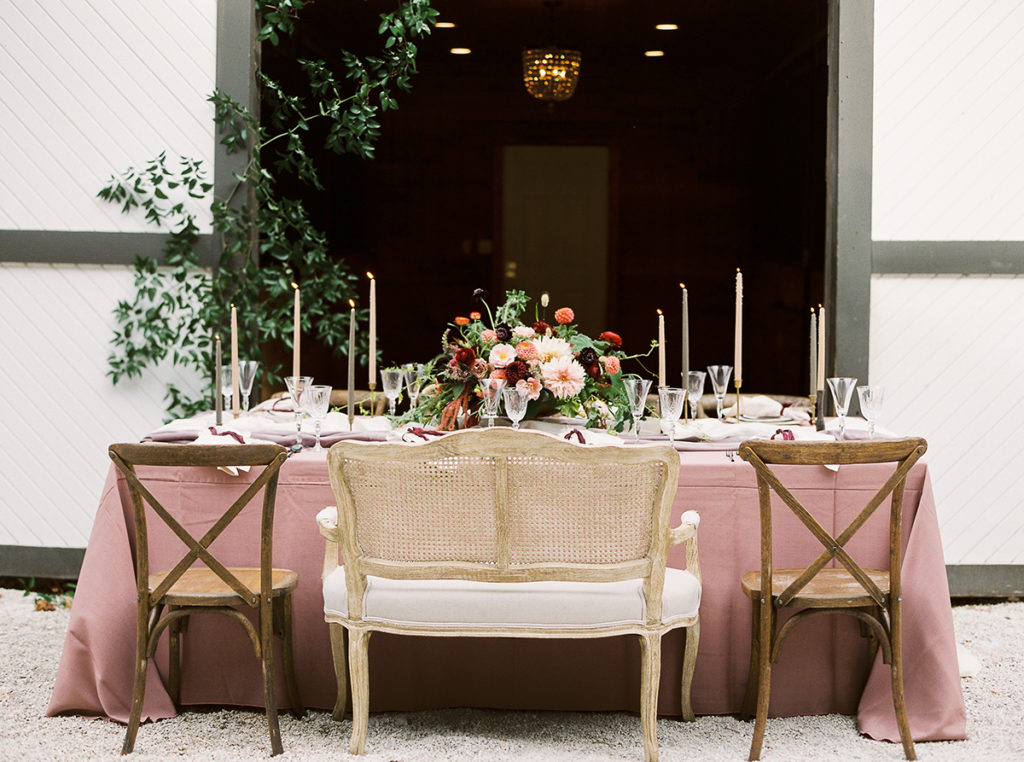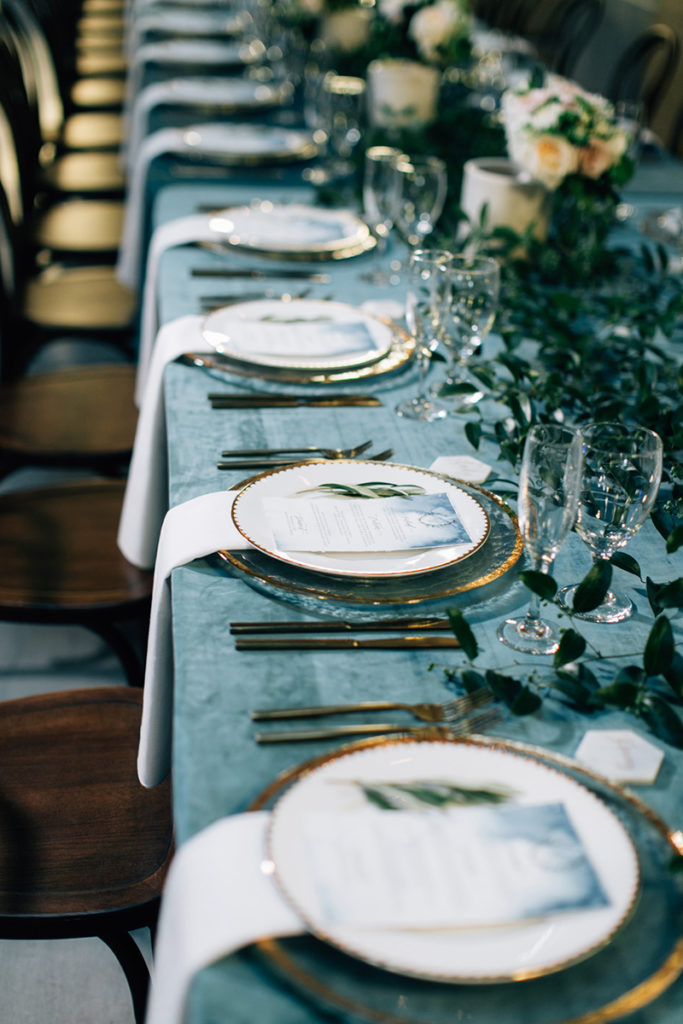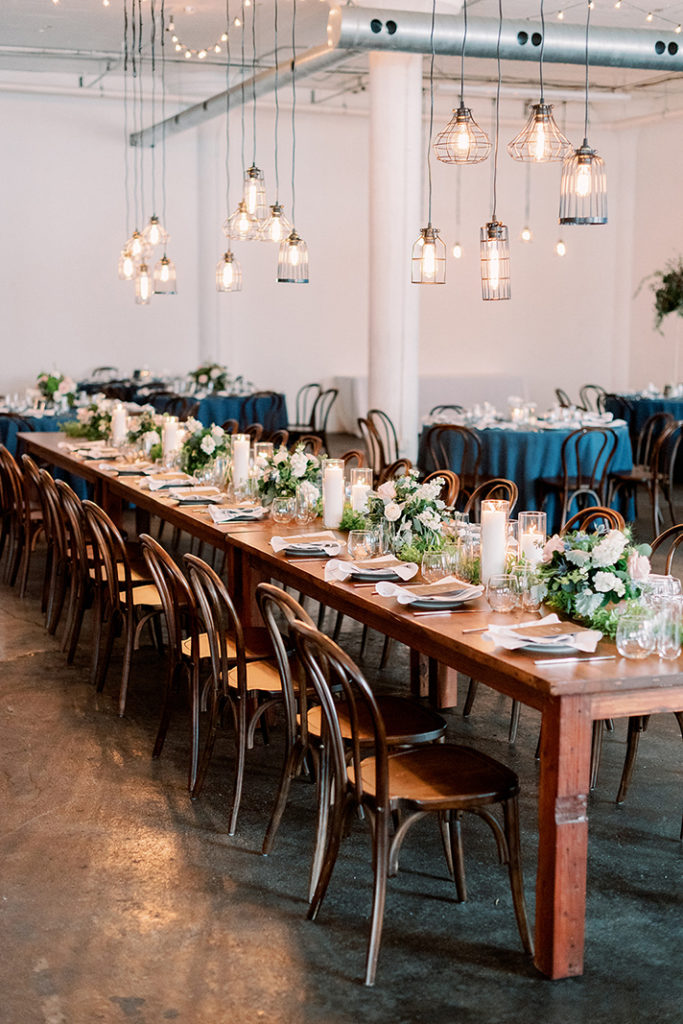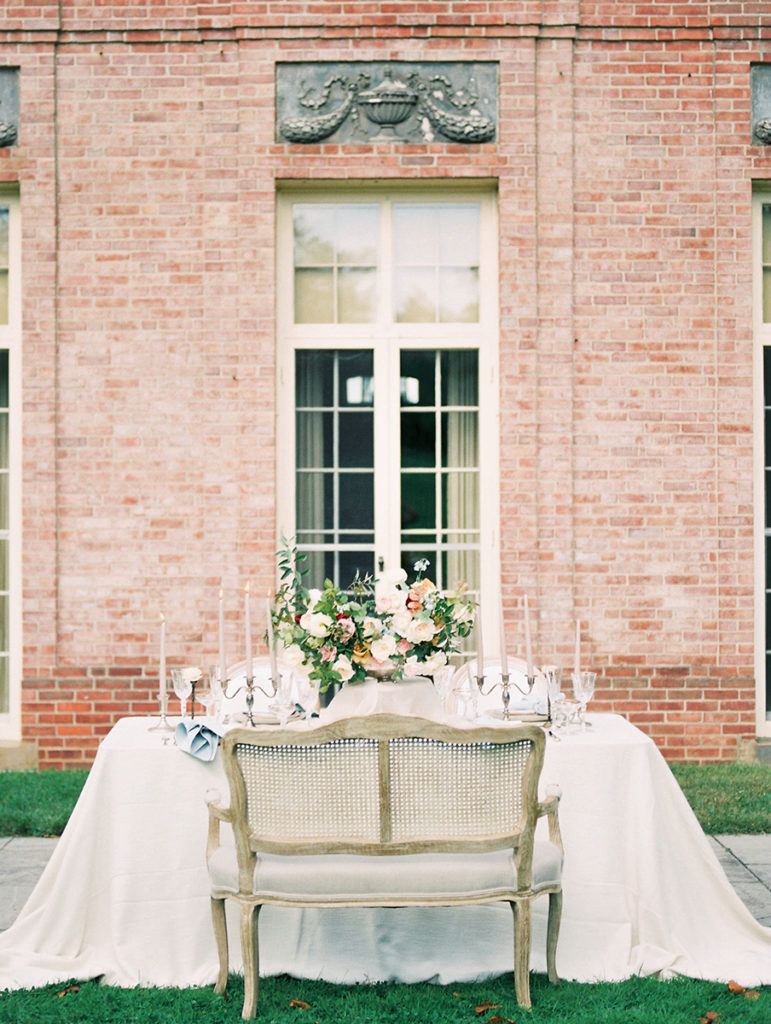By Alyssa Schmitt
The question was popped, the ring is on and every necessary social media post was made — now the wedding planning process can commence.
Though poring over stockpiled issues of Jstyle Weddings to learn of recent trends is a worthwhile – and commendable – next step, there are a few key elements to determine before a single flip-through can begin.
To help brides-to-be from getting lost in the boundless maze of planning, Gina Jokilehto-Schigel of Shi Shi Events in Cleveland and Somer Khouri-Bedran of A Charming Fête in North Olmsted offer advice for the various stages of planning to ensure the big day goes off without a hitch.

First steps
Before a recently engaged couple scrolls through images of picture-perfect weddings and visits one fairytale-looking venue after another, they need to set a budget – and that doesn’t mean throwing out a random figure. It means sitting down and asking whether an open bar is more important than two swans (pillows, holders or real-live swans) serving as ring bearers.
“Set a realistic budget,” Khouri-Bedran says. “Some brides come to us with pictures of these weddings that are multi-million dollar weddings and they’re on a $50,000 budget.”
Jokilehto-Schigel recommends getting all parties involved with the wedding together to determine what kind of event they want to produce.
“Really, it depends on what type of wedding you’re looking to have,” Jokilehto-Schigel says. “You need to sit down with your families and decide if this is going to be a more intimate affair or if it’s going to be something where the guest list is extensive. … Basically, you need to have a sit-down with both sides of the family and decide who’s comfortable contributing what to the budget.”
At the same time a budget is determined, the length of the guest list can start to take shape. Chances are a bride can’t invite everyone her mother wants to the wedding. Instead, those involved in planning and financing the event need to decide where the line is drawn for invites.
As a general rule, Jokilehto-Schigel says clients in the Cleveland market should have a minimum budget for food and beverage of $100 per person. Then multiplying that amount by the number of guests should indicate about half of one’s budget, she says. Once these are set, the couple can go on to the next step of planning, including visiting venues, though Jokilehto-Schigel warns a couple must stay mindful of costs.
“You want to keep food and beverage and site rental fee within 50 percent of your total budget,” Jokilehto-Schigel says. “Once you go over that 50 percent there, it’s really hard to make it back with décor, photography, et cetera.”

Halfway there
Once couples select the venue and all of their vendors, they might think they can coast through to the big event. Jokilehto-Schigel says be wary of this feeling because there’s still a lot of work to do.
“In the middle of the process, we’re formulating their design plan, we’re curating rentals, we’re going over floral proposals and really shaping and formulating their design,” she says.
In addition, the rehearsal dinner needs to be planned and stationery needs to be designed and proofed. But as soon as everyone’s name is spelled correctly on the invitations and they’re in the hands of the United States Postal Service, then there is time to sit back and enjoy the blissful moments of engagement.
Even if a couple is toward the middle of the planning process, Khouri-Bedran says don’t forget about the budget. Oftentimes, a couple can spend too much at the beginning, maybe even booking a venue cost a little more than originally planned. As the excitement of the engagement settles down, checking the budget is always a safe bet.
“I think, with us, the budget falls in the most important part of the category,” she says. “The budget and the checklist are truly the most important.”

The big day
As the big day approaches, both professional planners recommend having a set timeline to keep from going astray. Khouri-Bedran says to make sure items that were to be done six months before the wedding are done.
“Make sure all your ducks are in a row,” Khouri-Bedran says. “Our biggest thing is not procrastinating, because when you procrastinate, that’s what creates stress. … The timeline is there for a reason and it’s truly to help plan the things in advance that you can. There are going to be things that will come up – guests that want to come last minute or guests that don’t want to come anymore, whatever it may be – but those last two weeks are to be stress-free from the items that should have been completed.”
Jokilehto-Schigel says to look at the timeline of the day of the event. If a couple can build more time in the day, she says it’ll add more calmness to the experience. For example, if the photographer says it’ll take two hours for photos, listen to the professional and put that into the timeline. Adding a half hour on top of it wouldn’t hurt either.
If a wedding planner wasn’t hired for the event, Jokilehto-Schigel says to make sure tasks have been assigned to trusted bridal party members or family members and know what duties the vendors will carry out before the event begins.
“Who’s going to set up, for example, the kiddush cup, the kipahs, the ketubah — who’s setting up those pieces for the ceremony?” she says.
But even as the stresses of planning a wedding may seem monumental, both professionals remind us to also enjoy the process.
“Best-case scenario: You’re doing this once, so really have fun,” Jokilehto-Schigel says. “Enjoy it.”

